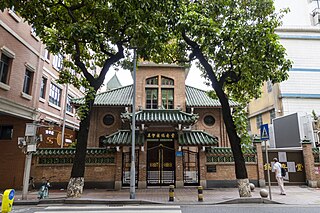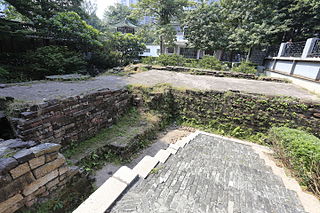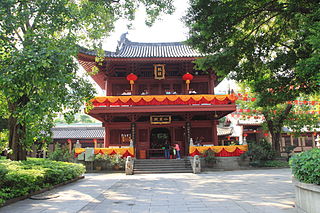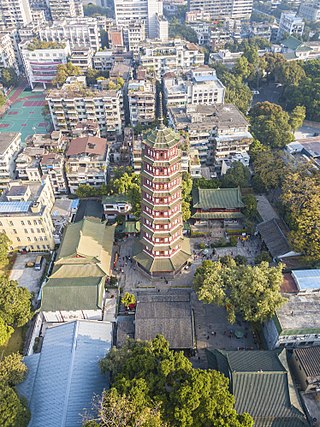Self-guided Sightseeing Tour #4 in Guangzhou, China
Legend
Guided Free Walking Tours
Book free guided walking tours in Guangzhou.
Guided Sightseeing Tours
Book guided sightseeing tours and activities in Guangzhou.
Tour Facts
2.1 km
63 m
Experience Guangzhou in China in a whole new way with our free self-guided sightseeing tour. This site not only offers you practical information and insider tips, but also a rich variety of activities and sights you shouldn't miss. Whether you love art and culture, want to explore historical sites or simply want to experience the vibrant atmosphere of a lively city - you'll find everything you need for your personal adventure here.
Activities in GuangzhouIndividual Sights in GuangzhouSight 1: Huaisheng Mosque
The Huaisheng Mosque is the main mosque of Guangzhou. Rebuilt many times over its history, it is traditionally thought to have been originally built over 1,300 years ago, which would make it one of the oldest mosques in the world.
Sight 2: Zion Christian Church
Guangzhou Zion Church is a Protestant church located in Guangzhou, China.
Sight 3: 西门瓮城遗址
The site of Ximen Wengcheng, located at the intersection of Zhongshan Qilukou, Liwan District, Guangzhou City, Guangdong Province, China, is a municipal-level cultural relics protection unit in Guangzhou, the type is ancient ruins, and the time of publication is July 1999.
Sight 4: Guangxiao Christian Church
Guangxiao Church is an important Christian church in Guangzhou, China, located at No. 29 Guangxiao Road, Yuexiu District, built in 1921-1924, by the Chinese Communists in the United States themselves organized by the Chinese Gang Shen Self-Care Mission (Congregational) to invest in the construction of the church, the general director of the church, Pastor Tan Woxin. The church sits west and faces east, four floors, 26.7 meters high, 35 meters long, 23 meters wide, can accommodate more than 1,200 people to worship, is one of the largest churches in Guangzhou.
Sight 5: Guangxiao Temple
Guangxiao Temple is one of the oldest Buddhist temples in Guangzhou, the capital of China's Guangdong Province. As the special geographical position, Guangxiao Temple often acted as a stopover point for Asian missionary monks in the past. It also played a central role in propagating various elements of Buddhism, including precepts school, Chan (Zen), Shingon Buddhism, and Pure Land. In this temple, Huineng, the sixth Chinese patriarch of Chan Buddhism, made his first public Chan lecture and was tonsured, and Amoghavajra, a Shingon Buddhist master, gave his first teaching of esoteric Buddhism. Many Buddhist scriptures were also translated here, including those translated by Yijing and the Shurangama-sūtra translated by Paramitiin (般剌密諦).
Sight 6: Temple of the Six Banyan Trees
The Temple of the Six Banyan Trees or Liurong Temple is a Buddhist temple in Guangzhou, China, originally built in AD 537.
Share
Disclaimer Please be aware of your surroundings and do not enter private property. We are not liable for any damages that occur during the tours.
GPX-Download For navigation apps and GPS devices you can download the tour as a GPX file.





